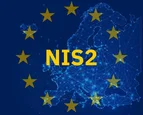The cloud question is no longer if, but how
Chances are, you’ve already made significant progress in the cloud. But a growing awareness is emerging: convenience doesn't equal control.
- Where is your data actually stored?
- Who has access to it?
- Are you compliant with NIS2 or DORA?
- And are you still in control?
For many organizations, these aren’t hypothetical questions anymore. They touch on what truly matters: risks, responsibilities, and whether your IT is future-proof.
Digital sovereignty is no longer a buzzword
“Digital sovereignty” may once have sounded abstract — but it now touches on something fundamental: control. Control over your data, your infrastructure, and your digital value chain. European regulations like NIS2 and DORA are raising the bar. They don’t just require technical measures; they also demand attention to people and processes. It’s essential not only to implement the right technology, but also to ensure that your teams are trained and your processes are equipped to protect digital sovereignty.
Why now is the time to reassess your cloud strategy
Yesterday’s assumptions won’t safeguard tomorrow’s operations. Organizations that want to stay future-ready should revisit their strategy with these focus areas in mind:
- Security & compliance: Can you demonstrate compliance with European regulations? Have you addressed responsibilities clearly in your cloud contracts?
- Data & location: Where is your data stored, and under which jurisdiction? Can you justify this to regulators?
- Cost & agility: How predictable are your costs? Do you understand the Total Cost of Ownership (TCO) of your environment?
- Organization & governance: Who is in control within your organization? Is that knowledge and capacity secured?
This isn’t a sprint - but waiting is not an option
Transitioning to a future-proof cloud strategy doesn’t require panic - but it does require action. Even small steps can offer clarity and regain control. Whether it's about compliance, infrastructure, or governance, the common theme is clear: You want control. Of your data, your processes, and your responsibilities as an IT leader.



